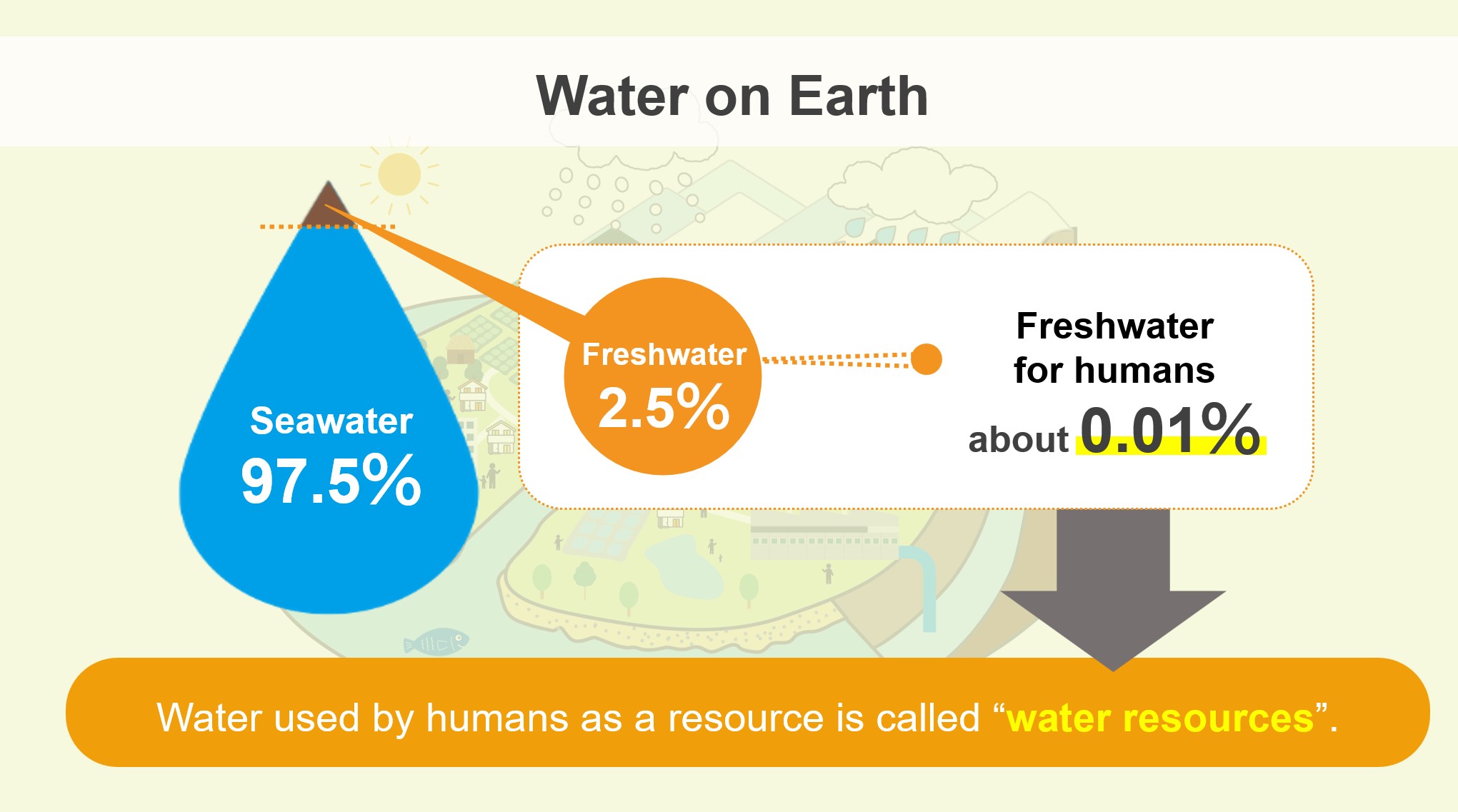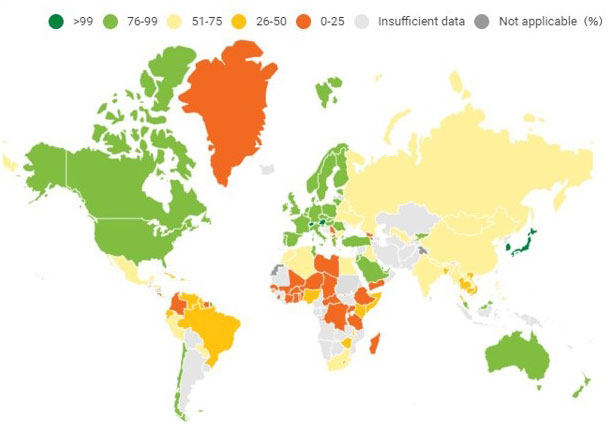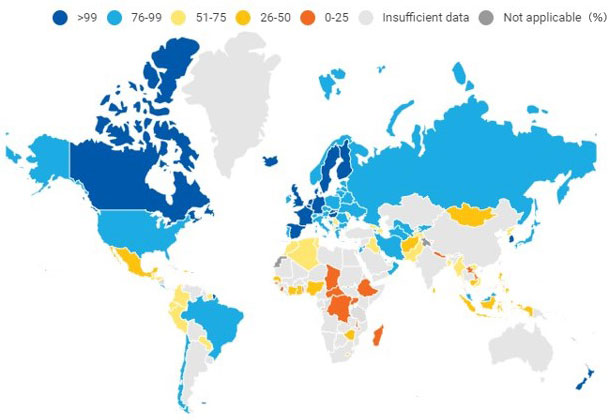Water pollution
97.5% of all water on earth is seawater.
The remaining 2.5% is freshwater, of which only about 0.01% (100,000 km3) is available to humans from rivers and lakes,
Water that can be used by humans as a resource is called a water resource.

From the video ‘Towards equitable water distribution and management‘.
/div>As the global population grows, water consumption has increased significantly.
About 70% of the world’s water consumed is used for agricultural purposes (mainly irrigated agriculture), while nearly 20% of the remaining water is used for industrial purposes.
Evolution of global water withdrawals, 1900-2018

Source:UNESCO (2023)
Water discharged after human use without proper treatment affects the lives and health of many people as water pollution.
About a quarter of the world’s people do not have access to safe drinking water.
Areas with sanitation problems(2022)

Source:UNICEF and WHO (2023)
In addition, more than 40% of the world’s population lives in areas with poor sanitation.
World map of safe drinking water(2022)

Source:UNICEF and WHO (2023)
These regions are biased towards emerging and developing countries.
Access to drinking water and sanitation is improving year by year, but by 2030, the target year of the SDGs, it will take twice as much effort as before to ensure basic sanitation worldwide, and four times as much to achieve safely managed sanitation. (Figure below)
Changes in global sanitation

Source:UNICEF and WHO (2020)
(Written by: Yuko Onishi)
References
United Nations Children’s Fund (UNICEF) and World Health Organization (WHO), 2020, State of the World’s Sanitation: An urgent call to transform sanitation for better health, environments, economies and societies.
https://www.unicef.org/reports/state-worlds-sanitation-2020
UNICEF and WHO, 2023, Progress on household drinking water, sanitation and hygiene 2000–2022: Special focus on gender.
https://data.unicef.org/resources/jmp-report-2023/
United Nations Educational, Scientific and Cultural Organization (UNESCO), 2023, The United Nations World Water Development Report 2023: partnerships and cooperation for water.
https://www.unesco.org/reports/wwdr/2023/en/download




